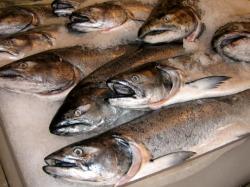Making Seafood More Energy Efficient
April 14, 2010 | 2 min to read

A CASE STUDY Seafood is a unique case study as it is one of the very few food industries with a large volume (65% FAO, 2007) of product being wild caught. The gathering of fish and shellfish has a very long history and is a very important protein source to humans, linked back to the birth of the human race (Crawford, 2004). The supply chain from net to plate can be over many levels and, in some cases, large distances. Catching, processing, refrigeration and transportation all account for energy usage in the supply of seafood products.
Within the fisheries sector, the numerous catching methods have different fuel efficiencies. As the price of marine diesel has increased greatly over the last few years, certain sectors have seen fuel bills become too high to remain profitable. Higher quayside prices for fish have offset the fuel increases in some sectors. Work by the industry body Seafish has been carried out within the UK fleet to assess the fuel efficiency and suggested improvements. Such improvements include the reduction of towing/ steaming speed, gear modifications, trip and landing efficiency. Globally the fishing fleets have been calculated to use 50 billion litres of oil or 1.2% of global oil supply (Tyedmers et al, 2005).
Two benchmarks that are typically used for the catching sector are catch per litre of fuel used and fuel costs as a percentage of turnover. Within the EU fisheries fleet, the catch per litre of fuel used is frequently skewed by quota restrictions leading to discarding. Economic surveys of the Scottish fishing fleet show fuel costs being 2030% of turnover in 2007; during 2008 the oil price has been extremely volatile with the summer peak of $147 a barrel being linked to quayside prices of over 80 pence a litre in the Scottish Islands.
To read the rest of this story, go to: Water World.
